Clean, Defrag, & Optimize
Disk Cleanup
Press the Windows + R keys and type cleanmgr
or type disk cleanup in the Search box
or Start > All apps > Windows Administrative Tools > Disk Cleanup
(You can also launch this for any drive from Windows Explorer > drive root > Manage tab > Cleanup button)
Choose the drive you wish to clean (usually C: for your OS drive) and click OK.
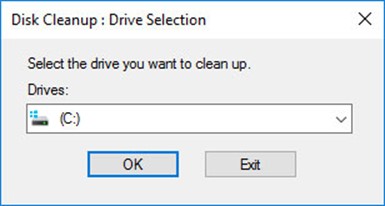
Click Cleanup system files
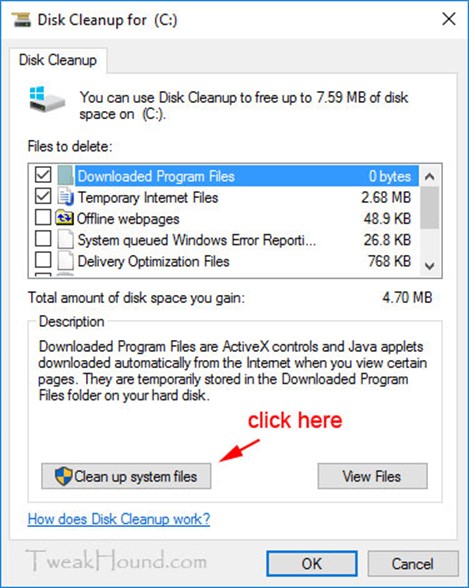
You can check everything > click OK
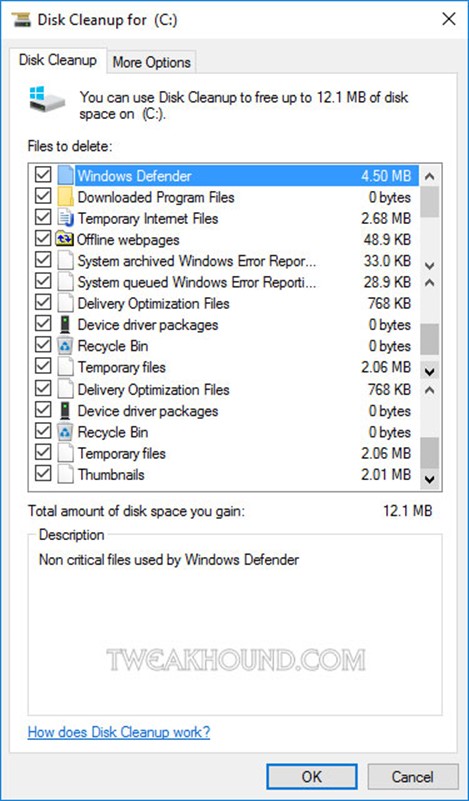
Advanced Disk Cleanup
This cleanup method will create a cleanup task that you can run whenever you like. It differs from the disk cleanup utility found in your menu or search (cleanmgr) in that it has more options.
1 – Press the Windows + R keys.
In the resulting window type cleanmgr /sageset:50 and press Enter (or click OK).
(you don’t have to use the number 50, any number will do. I use it because I always have and it is easy to remember.)
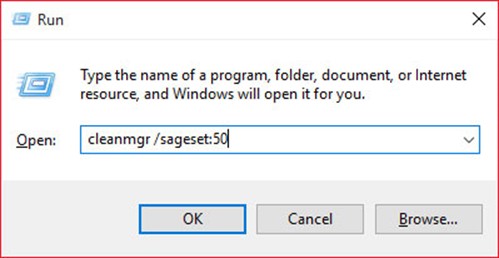
2 – Click Clean up system files
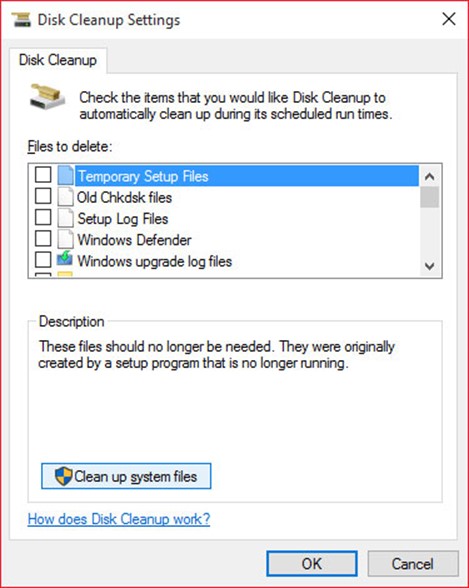
3 – Start checking boxes. You can highlight a line and it will tell you what it does. I check all boxes EXCEPT Windows ESD installation files. They aren’t just vital to refresh and reset, these files ARE refresh and reset. The Previous Windows installation(s) line is exactly what it says. No takebacks! Click OK when done.
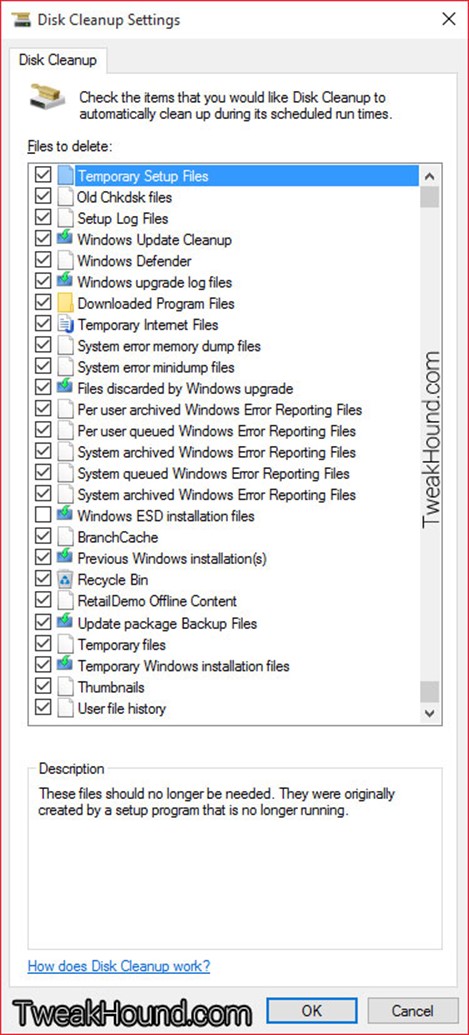
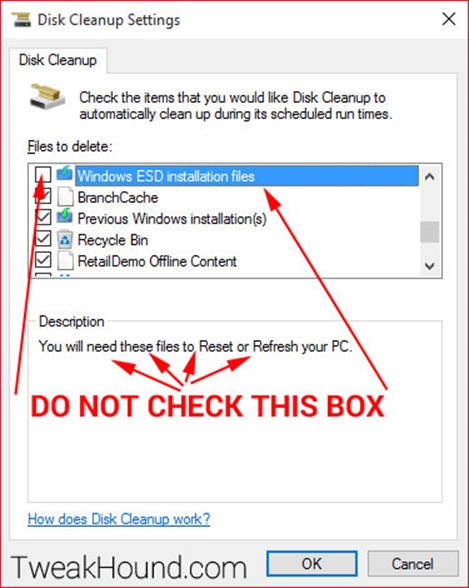
4 – Press the Windows + R keys.
In the resulting window type cleanmgr /sagerun:50 and press Enter (or click OK).
Remember this command, you can use this whenever you like.
(Notice we changed sageSET to sageRUN.) (The number has to be the same as you used above.)
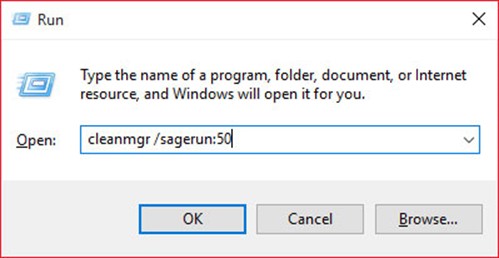
5 – Your new task will do its thing. This can take a while if you’ve got a lot of stuff to clean.
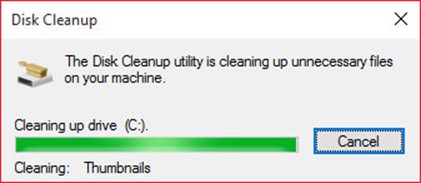
REBOOT when finished!
Disk Cleanup Freeware
There are 2 cleanup tools I use on all my PCs. Because these programs change often (like monthly) I do not install them. I use the portable versions. If you want to install them that’s fine.
All these tools have the ability to delete passwords. Be very, very careful you don’t delete them by mistake.
On all my machines I use 2 cleaners:
Wise Disk Cleaner – Daily cleanup. Home page (w/installer), Download page w/Portable Version. In the name of all that is Geeky, DO NOT download the registry cleaner by mistake.
Cleanmgr+ – Every so often cleanup. Weekly, or monthly, or before I make system images.
Wise Disk Cleaner
Wise Disk Cleaner is my favorite free disk cleaner. I set it aggressively and use it every few weeks or before I make backup images. You can download it here.
I choose everything EXCEPT anything that says password. Start checking or unchecking boxes.
When you are finished selecting boxes double check your selections. I’m not kidding, I’ll wait …
…………………………………………………………………………………………………………………………………………………………………………………….. OK. Now click the Scan button.
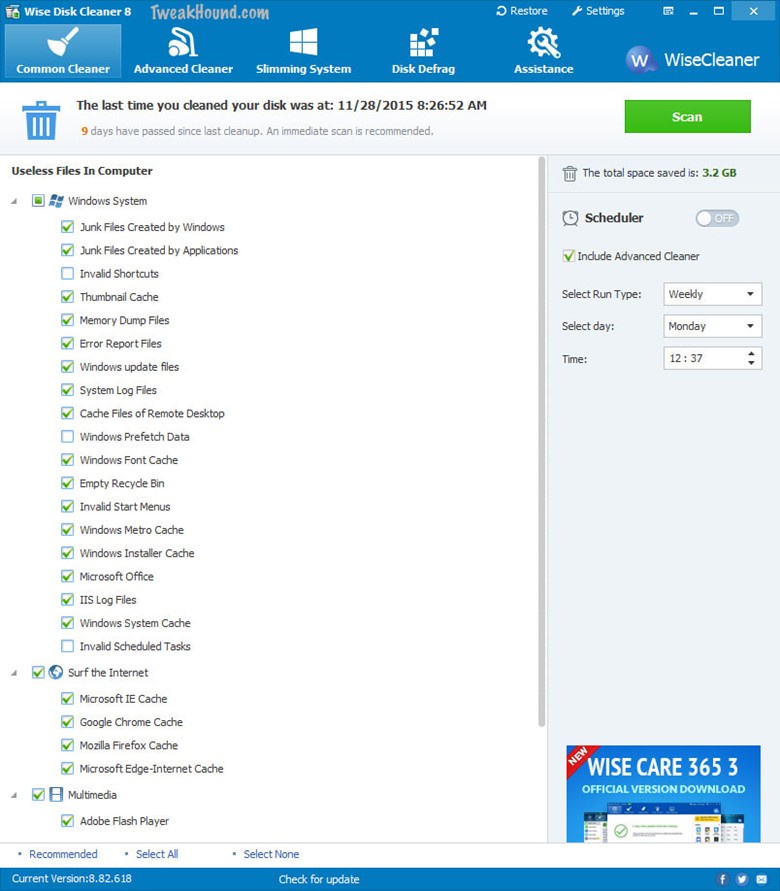
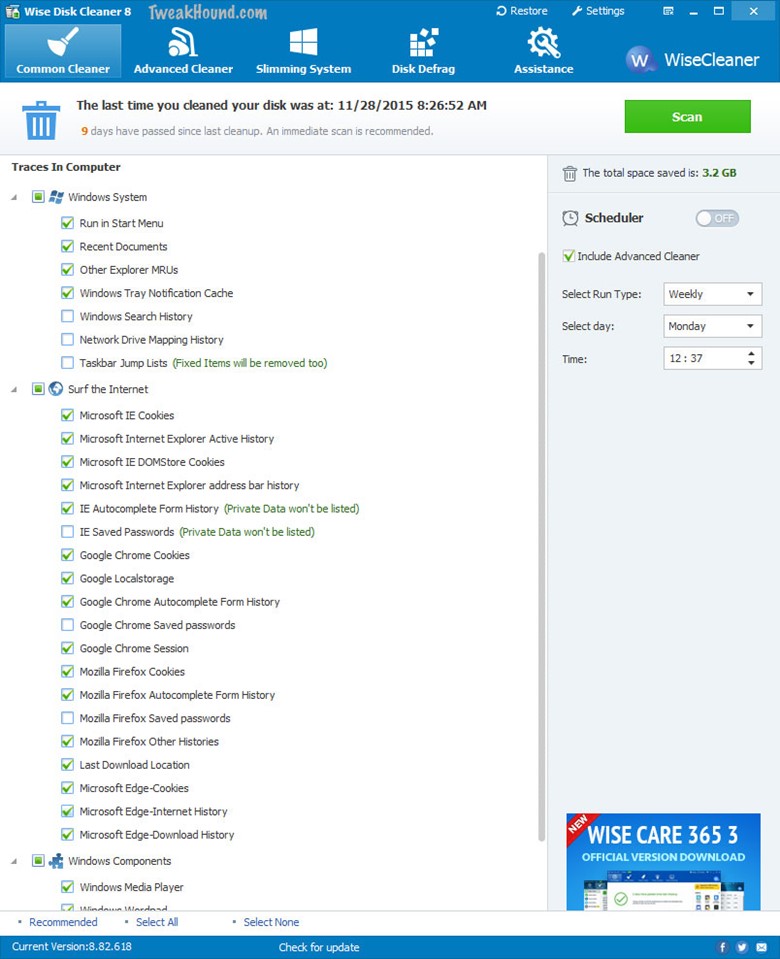
When the scan is complete you can click the Clean button. This is not reversible! Reboot when finished.
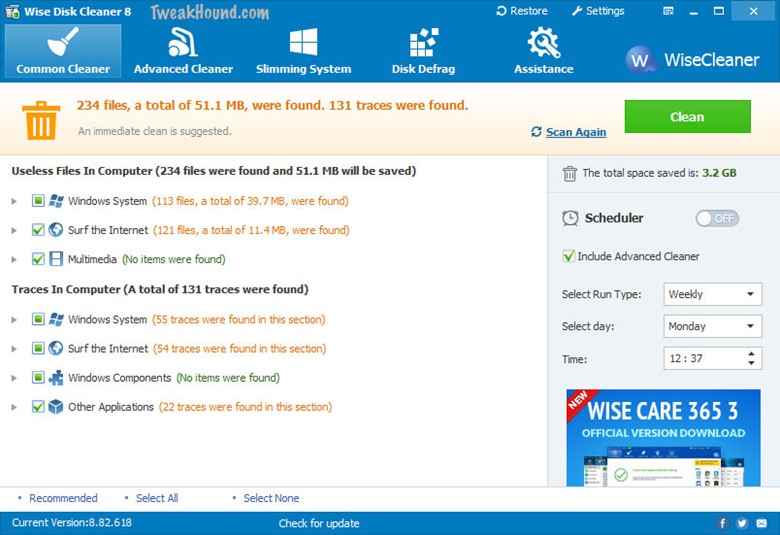
Cleanmgr+
I only use the Cleanmgr+ app on the right. Below are the options I choose (Note – there are 2 tabs/sections).
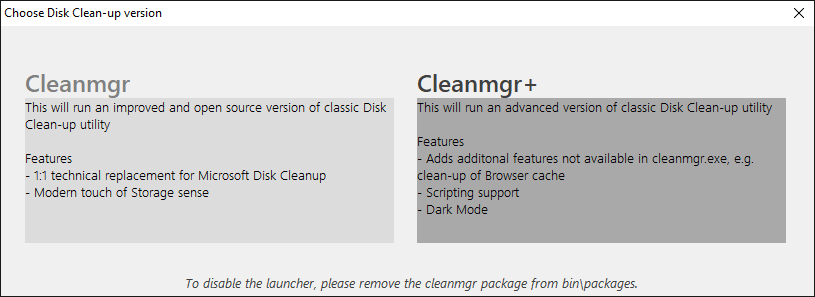
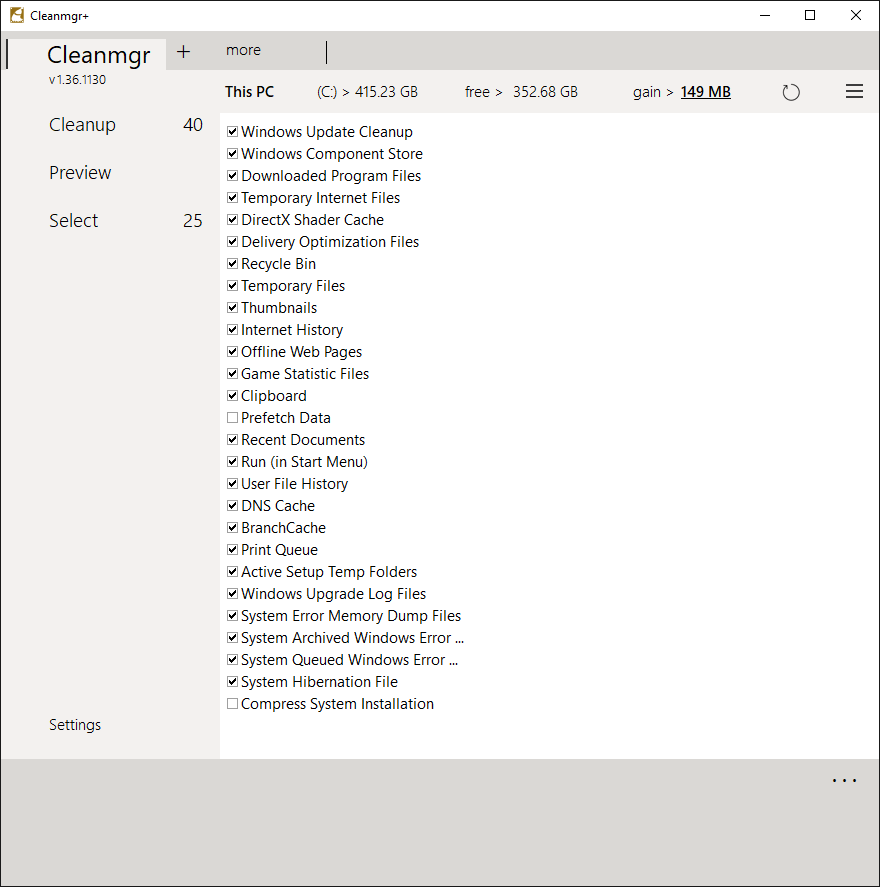
Some items require you to run this app as Admin.
I don’t have Opera/Vivaldi/Waterfox installed…
I would prefer this app not show programs I don’t have installed, but what ya gonna do?
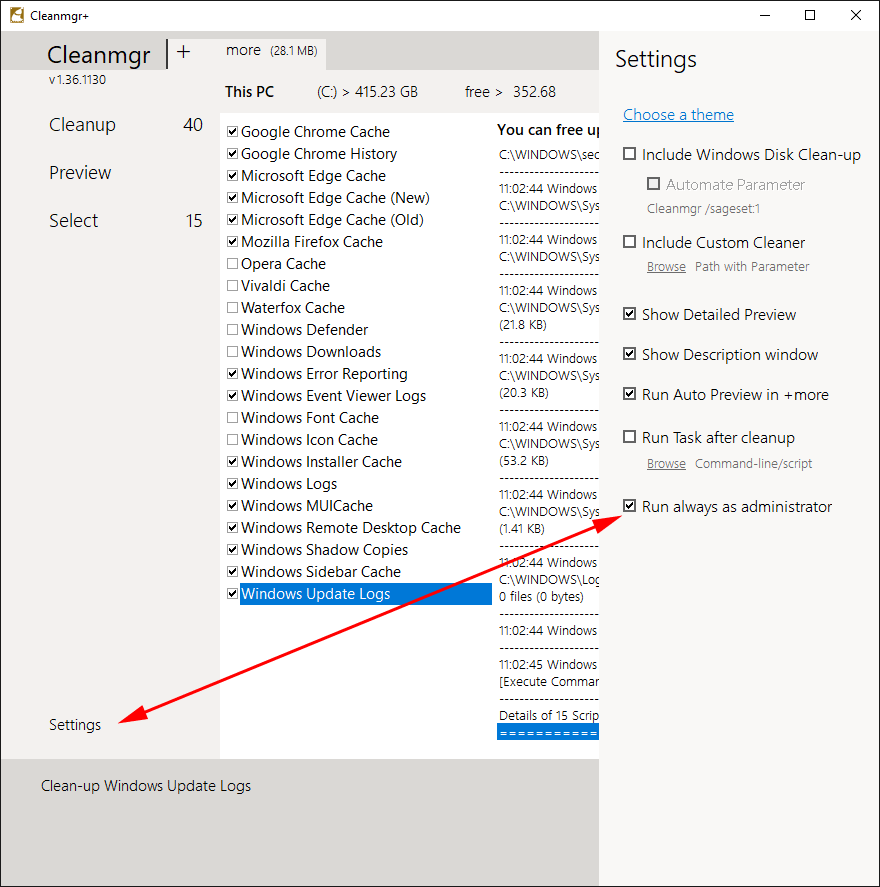
Manage Startup Items with Autoruns
note – I am aware that Win 10 Task Manager has a section to supposedly manage Startup items.
IMHO as of this writing it is broken: Win 10 – Boot Performance Monitoring Event Gone
Autoruns has long been one of my favorite programs. For the purposes of this article, we will just cover controlling startup items from the Logon tab. I encourage you to explore the program further. Autoruns description from the help file:
This utility, which has the most comprehensive knowledge of auto-starting locations of any startup monitor, shows you what programs are configured to run during system bootup or login, and what extension load into various Windows processes, including Explorer and Internet Explorer. A “Hide Signed Microsoft Entries” option helps you to zoom in on third-party auto-starting images that have been added to your system.
This is the way I use Autoruns. After downloading and extracting Autoruns, copy the folder to the root of your C: drive or your My Documents folder. Now open that folder and right-click on autoruns.exe (not autorunsc.exe) and choose Send to > Desktop (create shortcut). Now go to the shortcut on the desktop, right-click it and choose Properties > Shortcut tab > Advanced… button > check the Run as administrator box. Click OK > Apply > OK. You can now Pin that shortcut or copy / paste it to the Start Menu as I do. You can delete the desktop icon if you wish.
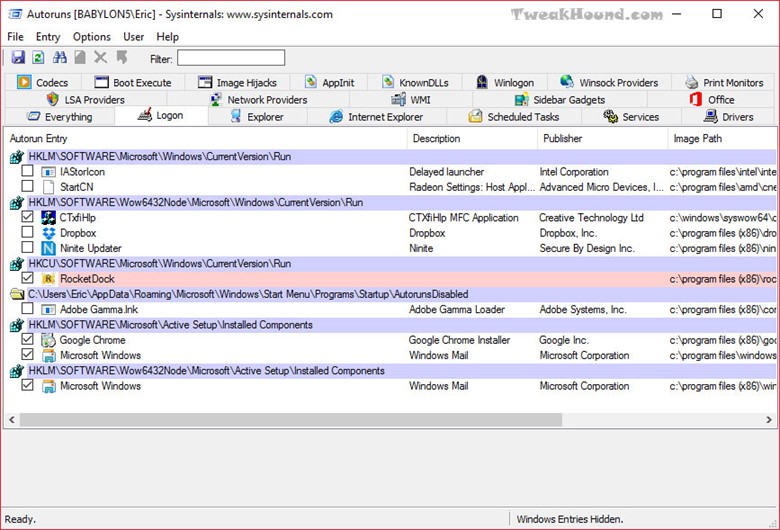
Now click the icon to open it > click the Logon tab > uncheck the things you do not want to start with Windows. You can click File > Save or the changes will be applied when you close the program.
Defrag & Optimize
Defrag
Defrag is part of the Windows 10 Maintenance process and was most likely partially configured during initial setup. For some reason Microsoft has decided to ditch the name defrag and call it optimize instead.
You can run defrag any time from Windows Explorer. Just click the Manage tab and the Optimize button.
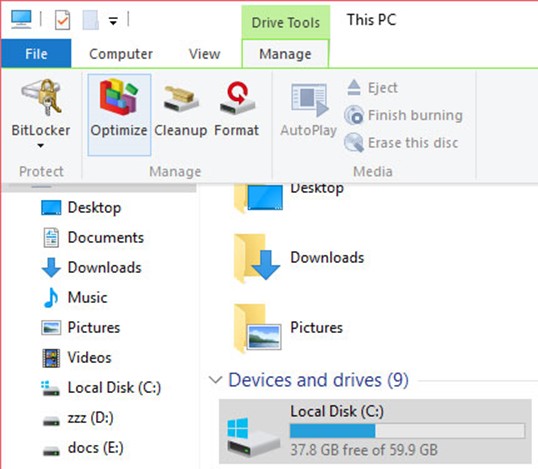
SSD users you SHOULD NOT disable defrag. For SSDs, Windows 10 will run trim and not defrag.
To open defrag: Press the Windows + R keys and type dfrgui (or type dfrgui or defrag in the Search box). Click Optimize to defrag now. Click Change settings to configure or turn off defrag.
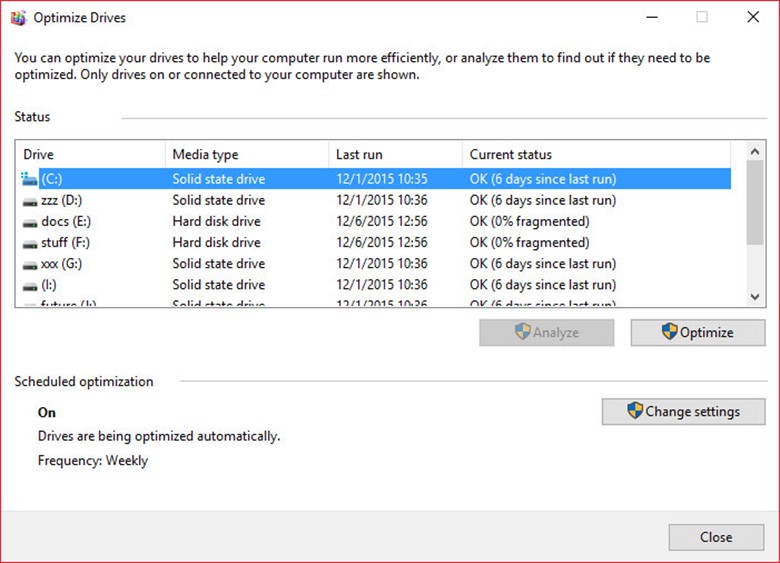
Hi Eric,
Thanks for a masterpiece again.
I have posted about your guide in my favorite security forum: malwaretips.com
Appreciate the hard work you put in.
Thank you
I went through it page by page. Nicely done.
I notice in your Wise Disk cleaner part your showing version 8, there at version X which has Windows WinSxS (not show in version 8).
not a big deal but thought I mention it.
Hey Eric,
I guess gone are the days where we would pour thru Black Viper’s tables to figure out what to disable. Kudos to BV of course, but it’s nice we don’t have to worry about Windows services all that much anymore.
I would recommend disabling 2 additional services — Remote Registry (maybe I’m old school and this doesn’t matter anymore, but the name of the service is still downright scary), and Connected User Experience & Telemetry (thanks but no thanks MSFT).
Great guide and thanks as always for your efforts,
Steve
Thanks Steve. Remote Registry is disabled by default. Connected User Experiences and Telemetry is taken care of here via O&O Shutup10.
I’ve noticed a small typo on page 17 under File History. The seventh word has an extra ‘s’ in it (constinuously).
Also the grammar of the first sentence does’nt seem quite right. I suggest leaving out the second and third words.
Eric: The registry hack for removing the word “Shortcut” from new shortcuts doesn’t seem to work in my version of Win 10 Pro 64b (20H32 v19042.746 Experience pack 120.2212.551.0). Instead the hex for link appears to operate as an incrementing count. For instance, say the Hex is showing 17 00 00 00 when I open RegEdit; I can set the Hex to 00 00 00 00 but on restart it shows 18 00 00 00. I wonder if it’s me, or MS?
Try:
Windows Registry Editor Version 5.00
[HKEY_CURRENT_USER\SOFTWARE\Microsoft\Windows\CurrentVersion\Explorer]
“link”=hex:1e,00,00,00
Where is the .reg to make the tweaks to a new system?
https://www.tweakhound.com/2020/12/30/tweaking-windows-10-version-20h2/19/
(Libraries) Just an FYI copy pasting the folders to a new location is an unnecessary step. The move dialog will do the work of moving the files in those folders for you, save yourself a couple of seconds and an insignificant amount of bytes on the web.
Peace, Love, Donuts,
Rita
A folder with the name of the library needs to exist in the location you want to move it to. The files are still moved. Copy/paste is just as fast and easy as your way.
Since Windows 10 is funky, if anyone reads these comments I have something to add, particularly for y’all gamers.
#1 Heed the warning and /do/ not remove windows apps from your machine with O&O, user only is enough. It deleted my app manifest so a batch reinstall did not work, and couldn’t find a way to restore it. Windows Store works fine for everything but Cortana, you need to do an extra step to get her back, even if only to disable, its a windows 10 trend that follows to my next suggestion.
#2 Go into gaming settings and just disable Game Mode/Game bar, don’t remove the app from user or computer. While it has no affect, every game you run calls the game bar and will pop an error saying its missing, I assume it has to do with the processes that start up Full Screen Optimizations calling game bar as well, regardless if its disabled it will never load. It is safe to uninstall the console companion.
In 20h2 there is no longer the option “sign in with a local account instead” after you have signed in with a Microsoft account. I had a coworker do this by mistake and now I cannot remove his Microsoft account from the workstation. Is there a way to manually remove the Microsoft account?
???
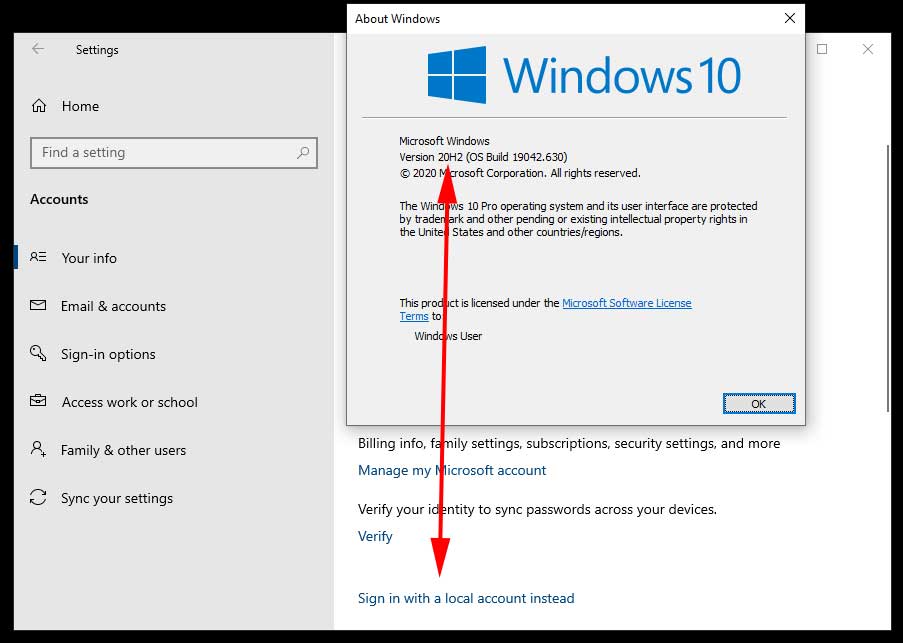
Hi Eric,
you may provide a reg-hack which patches the Windows 10 version number (not product key) to a recent one?
Reason:
MS does not deliver any apps via [Get], in my case today the free HTML5 Video Downloader by Arcadio Garcia (link below),
if they do not meet version # 10586.0 at least.
Last December I updated the OS for the sake of another app which left me in a total language mix, missing device and BT manager, a deliberate removed group policy editor (gpedit) but a proper reinstalled Cortana, Edge and all the other stuff MS cr*ps users lawn with.
Hence I re-installed my former shutupped/winslapped and outbound firewall protected v10240 again but been left in the rain
now when it comes to add simple addons from MS.
There is no rason whatsoever a downloader or else shan’t run on even older version than mine, just the usual
MS ignorance driven by complacency.
Your sincerely
Michael Damian
AFAIK there is no permanent way to do this.
Cheers Eric,
maybe the Hound digs that out one day 😉
Take care.
Nice and cool guide!
I just wanted to offer a tool for better power plan settings editing
https://forums.guru3d.com/threads/windows-power-plan-settings-explorer-utility.416058/